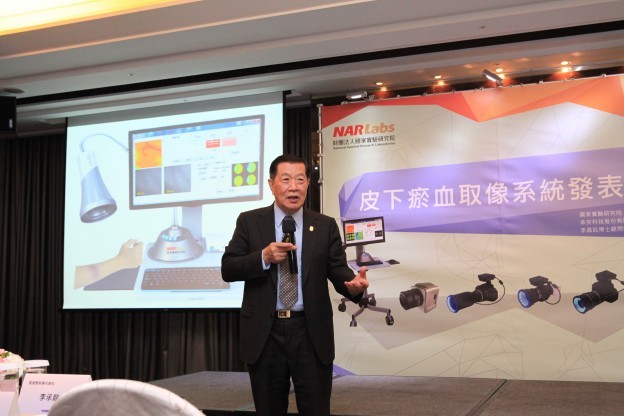Subcutaneous blood sampling system allows blood to help the victim speak
“The victim’s appearance is not obviously traumatic, but there is actually intradermal bleeding.†In this social case that is difficult to obtain evidence, how can the victim obtain the fairness and justice provided by the law? The National Experimental Research Institute Instrument Science and Technology Research Center (Education Center) successfully developed the “Subcutaneous Blood Collection Systemâ€, which was witnessed by Dr. Li Changwei, an internationally renowned forensic expert, for complete and comprehensive identification of subcutaneous blood stasis that was invisible at the beginning of injury. To create the best weapon for Taiwan criminal identification and to protect the interests of the public.

Constructing a complete blood test to make up for the empty window of blood test
Subcutaneous blood stasis is a manifestation of a disease or physical injury to the human body. The most common physical damage is caused by a collision of external forces such as a car accident, a fall or a blunt impact. Subcutaneous blood stasis can be divided into obvious visible blood stasis caused by massive rupture of blood vessels, inconspicuous blood stasis of extravasation of tissue traumatic fluid, and latent blood stasis with slow clotting of microvascular rupture. The most difficult situation in social cases is that after the victim was injured by external force, there was no obvious trauma and blood stasis when he first arrived at the hospital for examination, but the injury gradually appeared after a period of time. During the empty window period of this section of the inspection, the evidence collector cannot perform the crime judgment, which is a major technical gap in the current injury test.
In view of this, the National Institute of Instrumentation of the National Research Institute developed the world's first "subcutaneous blood sampling system" to solve this problem. If there is blood stasis, the blood oxygen concentration in the skin will change, using red light and infrared light to illuminate the human skin, and then through complicated calculations, the distribution of blood oxygen concentration in the skin can be known. Reflecting the oxygen and hypoxia of the subcutaneous blood, through this "blood oxygen distribution image", you can understand the extent and extent of subcutaneous injuries. Through this technology, the Instrument Center actually observes the changes in blood oxygen concentration over time after the human body's skin is subjected to external force collisions. It proves that this technology can effectively observe the aforementioned inspection window and successfully obtain subcutaneous blood stasis damage. The last piece of the puzzle.
Subcutaneous blood stasis system to initiate criminal forensics
Technically, the National Institute of Instrument Science Center broke through the existing blood oxygen concentration test to provide only a single point of information technology bottleneck, leading the world to construct a large area (up to 8 cm × 8 cm) skin oxygen concentration distribution image, The sensitivity and applicability are extremely high, and the user can quickly understand the blood stasis state in the skin through color grading interpretation. In addition, the present technology is not limited to the detection of subcutaneous blood stasis, but also can detect the attenuation change of the blood oxygen concentration of the isolated blood to determine the blood ex vivo time, which can be used as an important evidence for the determination of the injury time.
"Subcutaneous blood stasis imaging system" is carried out by the Electronic Science and Technology Center, and the cooperative manufacturer Chenghao Technology Co., Ltd. carries out engineering products. This instrument is a continuation of the results of the fluorescence imaging system previously cooperated with Chenghao Technology Co., Ltd., which has been used by the US police for criminal evidence collection. At the beginning of this year, the Instrument Center will cooperate with internationally renowned forensic expert Dr. Li Changwei to discuss the measurement of various types of biometric evidence, which is expected to be widely used in the field of criminal forensics.
dry flowers
Guangzhou Zhongzhinan Supply Chain Co.,Ltd. , https://www.gzzhongzhinan.com